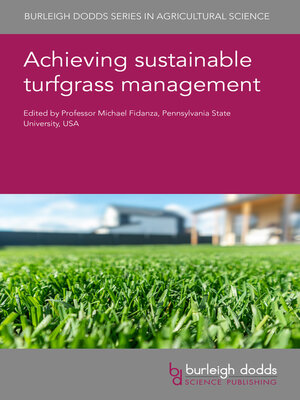Achieving sustainable turfgrass management
ebook ∣ Burleigh Dodds Series in Agricultural Science
By Prof Michael Fidanza

Sign up to save your library
With an OverDrive account, you can save your favorite libraries for at-a-glance information about availability. Find out more about OverDrive accounts.
Find this title in Libby, the library reading app by OverDrive.



Search for a digital library with this title
Title found at these libraries:
| Library Name | Distance |
|---|---|
| Loading... |
"The book is broken down into three distinct parts and encompasses a total of 20 chapters which come complete with extensive references. The editor – Dr Michael Fidanza – needs little introduction to global turfgrass managers...he has drawn together more than 60 contributing authors, representing a 'who's who' of the turfgrass scientific and academic community." (Book Review Published in Australian Turfgrass Management Journal – Brett Robinson, Australian Sports Turf Managers Association, Australia)
Turfgrass is required to meet a challenging range of aesthetic, functional and environmental requirements, whilst also adapting to the threat of abiotic and biotic stresses which are being accentuated by climate change. The turfgrass industry is also facing increasing pressure to reduce its environmental impact and advance more sustainable maintenance practices that utilise and/or optimise fewer agronomic-related resources.
Achieving sustainable turfgrass management summarises the wealth of recent research that addresses these challenges, whilst also identifying potential mitigation strategies to reduce the sector's contribution to climate change, such as reduced fertilizer use and water conservation. This collection also highlights developments in breeding for improved cultivars of turfgrass with enhanced abiotic and biotic stress responses, as well as climate resilience.
In its extensive exploration of turfgrass physiology, breeding and cultivation, the book showcases how the turfgrass industry can adopt more sustainable management practices and reduce its environmental impact.







